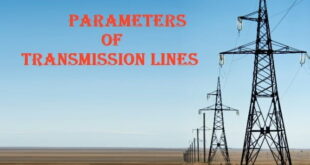Answer: The difference in voltage (110V vs. 220V) across countries is primarily due to historical, economic, and technical factors. Reasoning: The choice between 110V and 220V systems largely depends on historical development, economic considerations, and technical requirements. Countries like the United States and Japan typically use 110V due to early …
Read More »Parameters of Transmission Lines for Efficient Power Delivery
Understanding the Crucial Parameters of Transmission Lines Introduction: Transmission lines form the backbone of our power infrastructure, facilitating the efficient and reliable transfer of electricity over long distances. The design and performance of these transmission lines are influenced by a multitude of parameters, each playing a crucial role in determining …
Read More »Electrical Installations – Standards & Regulations around the World
Electrical Installations – Standards & Regulations around the World Introduction: Electrical installations are integral components of modern infrastructure, powering homes, businesses, and industries across the globe. To ensure the safety, reliability, and efficiency of these installations, various countries have established comprehensive standards and regulations. These guidelines, often developed by national …
Read More »Why is the earth pin thicker and longer than the live and the neutral pins?
Answer: The earth pin is thicker and longer than the live and neutral pins in electrical plugs for safety reasons. The primary purpose of the earth pin is to provide a reliable path for electrical fault currents to be safely directed to the ground. The larger size of the earth …
Read More » Electrical Engineering World Wiring a Brighter Tomorrow!
Electrical Engineering World Wiring a Brighter Tomorrow!



